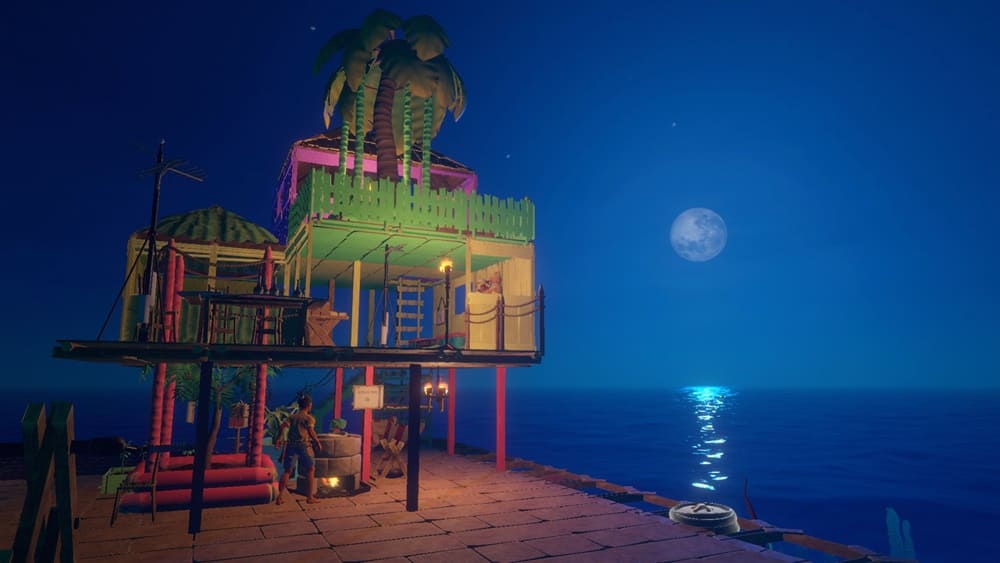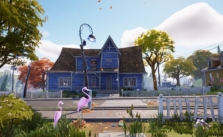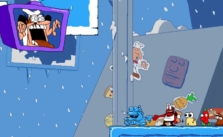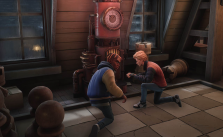Raft Beginner’s Guide – Tips & Tricks for New Players

The survival game genre is full of options for those who want a game that prioritizes the management of various aspects of human survival over its story. One such game, probably one of the most popular right now, is Raft. The just recently released complete version of the game pits you and your friends against the dangers of the ocean as you try to build a floating base to live and thrive on. The game spent a period of four years in Early Access, and now that the game is considered complete, there will be many new players who jump in. If you are one of those new players who missed out on four years’ worth of learning, you can get a little boost of knowledge with this Raft Beginner’s Guide. The tips & tricks in this guide will set you on your way to becoming a great Raft player.
-
Phantom Poles
The raft you start the game with will quickly run out of space. One way players like to build out their raft early on is vertical, using poles as supports for a second level. When you use the standard square platform pieces, they break when you remove the pole that was holding them up. However, a helpful glitch in the game allows for free-floating second floors if you use triangular platform pieces. If you build your second floor with these pieces and destroy the pole holding them up, they will float in place indefinitely.
-
Use the Fishing Pole
In Raft, you’ll have to manage your hunger levels. When it depletes, you’ll need to refill it by eating food. There are a number of different ways you can eat and things you can consume, but for beginners, one of the most efficient ways to get a stable supply of food is by fishing. To do that, you’ll need to construct the fishing rod, which has meager ingredient requirements of a few pieces of wood and some rope. For that small investment, you’ll get 10 uses, which means 10 fish. You can cook those up all at the same time, and you won’t be going hungry anytime soon. Even when you run out, you can just quickly make a new fishing rod and repeat the process over again.
-
Fortifying Your Raft
Once you’ve drawn the attention of the game’s infamous shark, you’ll have to constantly be rebuilding your raft as the creature destroys parts of it. This can be very annoying and time-consuming, but there is actually a way to keep the shark from damaging your raft at all. All you have to do is place a platform around the outside of your raft every four squares and reinforce them. Those reinforced platforms should also be on both sides of every corner. This particular setup prevents the shark from attacking your raft, giving you one less thing to worry about.

-
Become a Chef
Another way to keep you and your friend well-fed and ready for action is by building and using the game’s cooking pot. You’ll need a large supply of a few ingredients like mushrooms and silver algae to make the majority of the good recipes you find, but as long as you have what you need, you’re in business! What makes the cooking pot worth the effort over just cooking and eating fish is the bonus you get from eating the full recipes you can only make in the cooking pot. Eating till this bonus bar is full will keep you full for an entire 20 minutes. That kind of bonus is huge in a game like Raft, giving you a ton of time to explore, craft, or do whatever you need to do without worrying about eating.
-
Efficient Engine Use
When you get to the point in the game where you need an engine for your raft to progress, there are some things you should know. First, using the engines requires biofuel, which is kind of difficult to come by. Next, you only need a single engine for every 100 platforms on a raft, so if you have a tiny raft, you’ll probably only need a single-engine. The more engines you use, the faster your raft will go, but you’ll also burn through biofuel much, much faster, making it not very efficient. That early in the game, you’ll want to be preserving your biofuel as much as you can. This is also why your raft should be kept relatively small for most of the game until you have a wealth of resources to sustain it properly.













